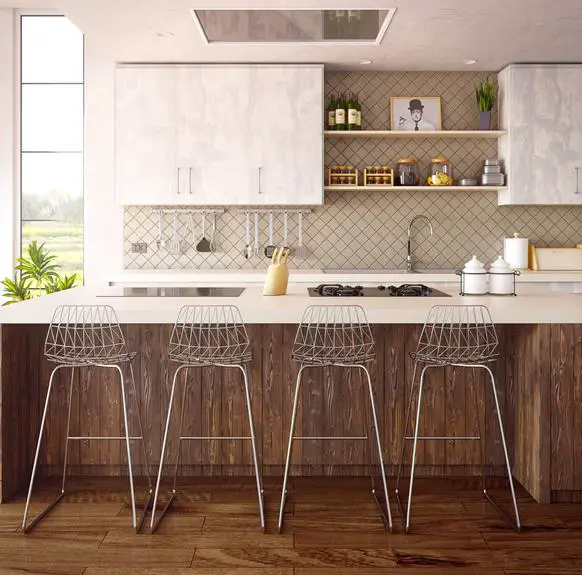Whether a dining table should match kitchen cabinets depends on the desired style and feel of the space. Matching furniture can create a unified and formal look, while mixing designs can give a room a lively and contemporary atmosphere.
The choice should consider both the visual appeal and the functionality, aiming to reflect the preferences of the residents and create a welcoming space.
The Case for Coordination
Homeowners often match their dining table with kitchen cabinets to create a unified look. This design choice emphasizes visual flow and balance, making the space appear well-organized and inviting. Matching these items in color, style, or material helps blend the areas together, typically the central parts of the home.
Personal tastes largely drive the decision to coordinate, though it also suggests a preference for traditional or classic styles. This intentional design choice can be seen throughout the home, with color schemes playing a key role in either bringing elements together or providing contrast while maintaining harmony.
From a practical standpoint, coordinated furniture can make spaces seem larger and more open, as it avoids visual interruptions. It can also potentially increase a home's resale value, as many buyers prefer spaces that appear thoughtfully arranged.
Ultimately, the decision to match furniture is up to the homeowner. However, for those aiming for a consistent and polished look, coordinating furniture is a strong option that can offer timeless appeal.
Benefits of Contrasting Styles
Contrasting styles add character and energy to a home's design. An interior designer may suggest combining a modern dining table with traditional cabinets to form a striking centerpiece in an open space. This contrast captures attention and allows homeowners to personalize their space.
In an open layout, using contrasting styles helps to differentiate areas, like separating the dining space from the kitchen, without walls. This keeps the open feel while adding visual depth.
Each piece's beauty is more noticeable when contrasting styles are used. For example, a dark wood table next to white cabinets emphasizes the qualities of each. Different wood finishes between furniture can spark conversations about the design choices.
Contrasting styles offer decor flexibility. It's simpler to update parts of a room, like the table or cabinets, rather than the entire area, as trends change. This approach is both functional and visually appealing, and it adapts to the homeowner's changing tastes.
Understanding Color Harmony
Color harmony is important for creating a visually appealing kitchen and dining area. It involves selecting cabinet and dining table colors that complement each other. In interior design, this arrangement of colors should be pleasing to the eye and create balance.
To achieve color harmony, one should consider the home's overall style and the size of the kitchen and dining space. Methods include using analogous colors, which are next to each other on the color wheel, for a calm design, or contrasting colors for a more energetic look. The cabinet color can guide the choice of dining table color.
The materials used also affect color harmony. Matching wood types for cabinets and the dining table can unify the spaces, which is especially useful in smaller homes to avoid a crowded feel.
Choosing harmonious colors for the kitchen and dining area is subjective. While some people prefer matching colors, others may opt for an eclectic mix that still feels cohesive through smart color and material selection.
Material Matters: Wood, Metal, and Beyond
Materials are essential in designing your kitchen and dining area, affecting both appearance and functionality. Wood provides a classic, warm look adaptable to various styles, while metal adds a modern, industrial touch. Combining different materials, like a wooden table with metal cabinets, can create interesting contrasts and depth.
Alternatively, using similar materials, such as a glass table with wood cabinets, can make a space feel unified and open. Marble is another option, offering durability and luxury.
Choose materials that align with your home's style and meet practical requirements, shaping the overall feel and daily use of the space.
Designing for Your Lifestyle
Your dining table and kitchen cabinets should suit both your style and daily needs.
If you often host gatherings, matching the dining room to the living room can offer a unified look. However, if your dining area is used for casual activities, prioritize durable and easy-to-clean furniture over matching styles.
Your home should reflect your preferences and lifestyle, whether that means coordinated wood finishes or a variety of materials and colors.
Design cohesion is optional and can also be achieved with complementary colors or recurring design themes, ensuring functionality for your lifestyle.




